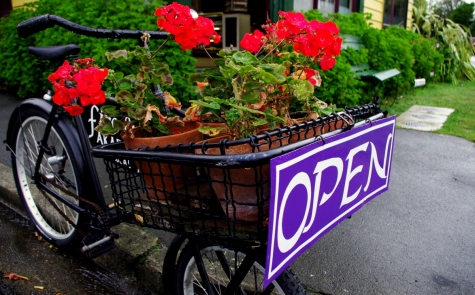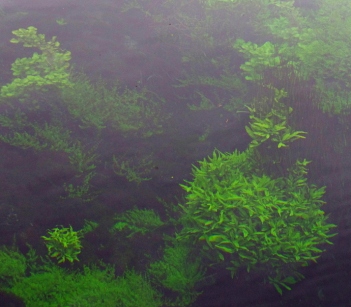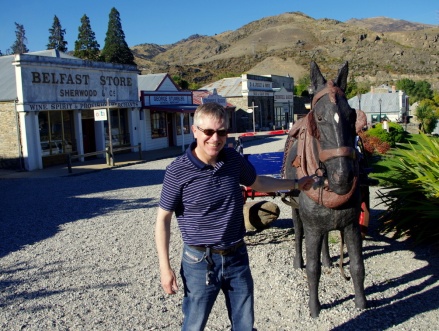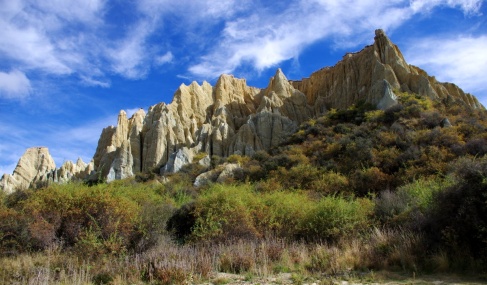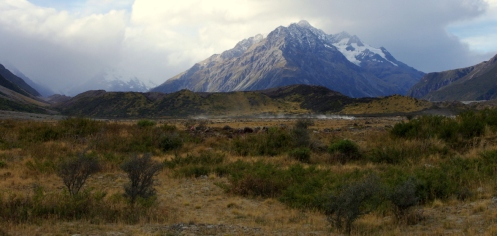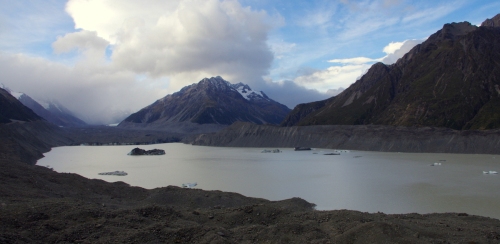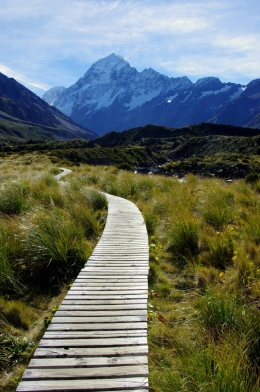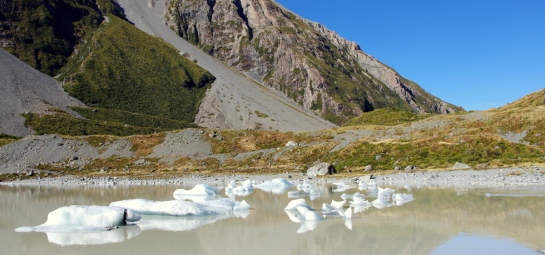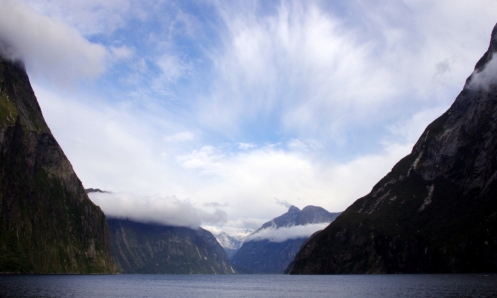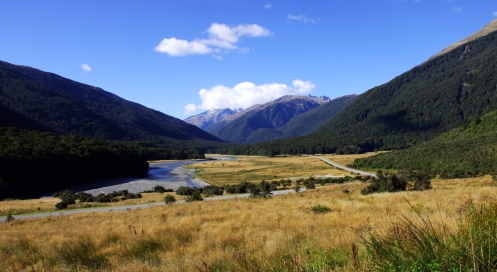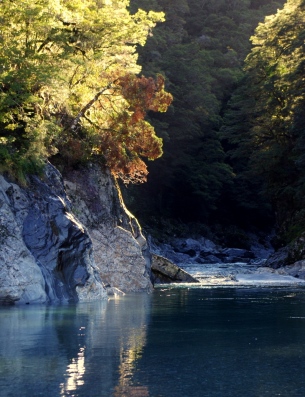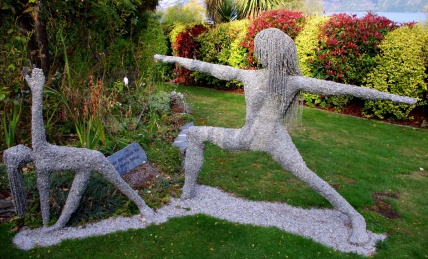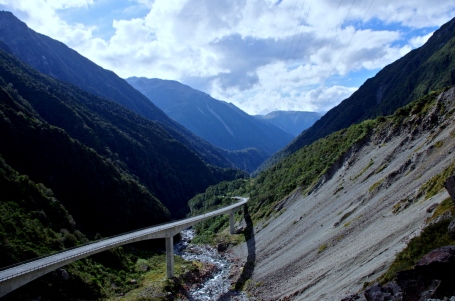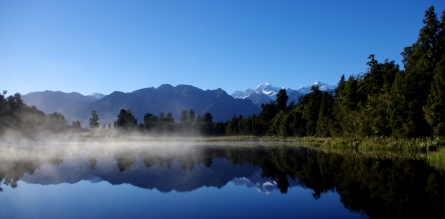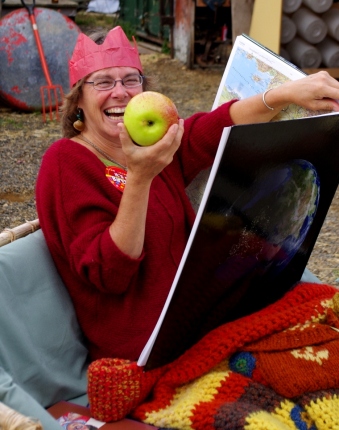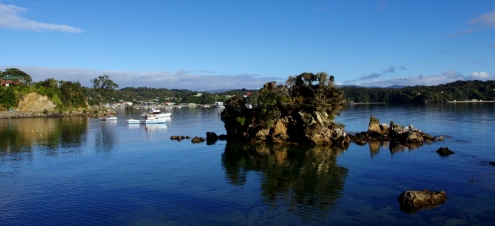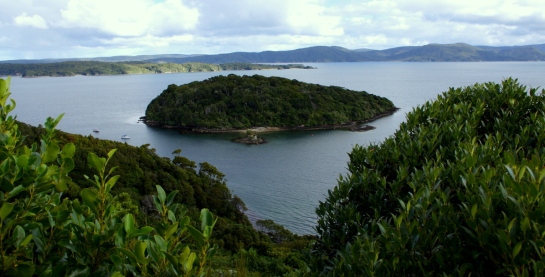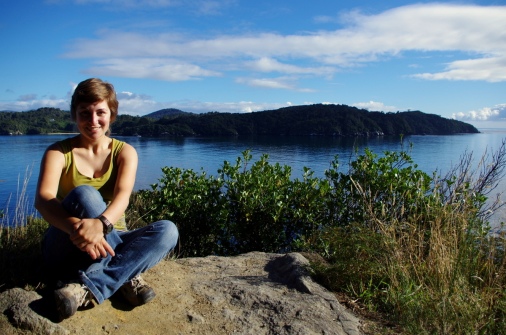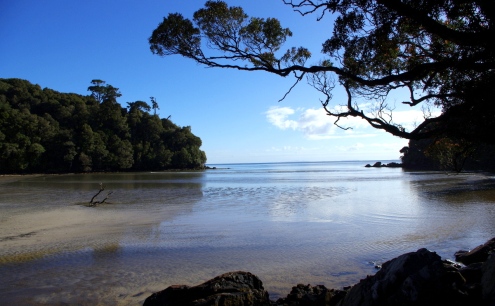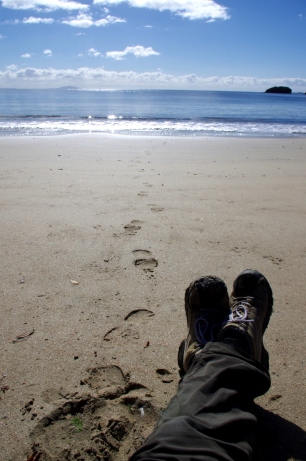In Rangiora I fell in love with a nine-month-old doe named Pipi. She’s a small goat, near the bottom of the herd, and since her mother and brother were sold to another farm she’s a bit lonely, having no “herd friends.” Bottle-fed as a kid, she connects with humans instinctively. She’ll look into your eyes differently and she knows her name more than the others. Sometimes she’s looking for love, and she’ll come up to you and put her head against your leg, wanting to be petted. Pipi is the dearest and sweetest little goat I have ever met. The day I left the Rangiora farm I was inexplicably sad and nostalgic, and whatever the cause may have been, I am calling the reason Pipi. I never said a proper goodbye to her and I miss her like the Dickens.
 The most important thing I learned at Tricolore Goats was that each goat has an incredibly distinct personality and has to be treated as such. They’re smart and clever beings and developing a relationship with each one is the beauty of a small-scale herd. The ones I got to know best were the milking goats: Lily, a massive but gentle white doe, Lilja, second-in-command of the herd, Gracie, a sweetheart and veritable milk-machine rescued from a dairy farm, Sky, headstrong and gorgeous and my favourite to milk, and Mallow and Bonnie, two smaller light-brown does. An example of how smart these lovelies are? They know in what order they go in and will walk straight up to the correct milking stand and wait to be milked. Here are photos of Lily, Mallow, and Sky, in that order:
The most important thing I learned at Tricolore Goats was that each goat has an incredibly distinct personality and has to be treated as such. They’re smart and clever beings and developing a relationship with each one is the beauty of a small-scale herd. The ones I got to know best were the milking goats: Lily, a massive but gentle white doe, Lilja, second-in-command of the herd, Gracie, a sweetheart and veritable milk-machine rescued from a dairy farm, Sky, headstrong and gorgeous and my favourite to milk, and Mallow and Bonnie, two smaller light-brown does. An example of how smart these lovelies are? They know in what order they go in and will walk straight up to the correct milking stand and wait to be milked. Here are photos of Lily, Mallow, and Sky, in that order:


 In a way, I felt my WWOOF journey came full circle at Sarah and Steve’s farmlet. Their farm was at the top of my wishlist at the beginning, and I couldn’t arrange a visit that fit with their schedule the first time round but was lucky enough to be able to make it work later on. Considering that the reason I considered WWOOFing in the first place was to have a chance to work on a goat farm, now I can officially say that I’ve achieved that goal.
In a way, I felt my WWOOF journey came full circle at Sarah and Steve’s farmlet. Their farm was at the top of my wishlist at the beginning, and I couldn’t arrange a visit that fit with their schedule the first time round but was lucky enough to be able to make it work later on. Considering that the reason I considered WWOOFing in the first place was to have a chance to work on a goat farm, now I can officially say that I’ve achieved that goal.
 Sarah and Steve are an expat English couple who’ve lived in Canterbury for the past ten years. They’ve never been back to England. Steve’s a forensic nurse and Sarah’s a former high school/ESL teacher. She grew up on a farm and said that when she started working with goats again, things clicked into place and suddenly she was doing what she was meant to be doing. I had some very interesting conversations with them about life in this modern world, and was glad to meet their wonderful daughters Clem and Chloe, and Chloe’s boyfriend Jayden.
Sarah and Steve are an expat English couple who’ve lived in Canterbury for the past ten years. They’ve never been back to England. Steve’s a forensic nurse and Sarah’s a former high school/ESL teacher. She grew up on a farm and said that when she started working with goats again, things clicked into place and suddenly she was doing what she was meant to be doing. I had some very interesting conversations with them about life in this modern world, and was glad to meet their wonderful daughters Clem and Chloe, and Chloe’s boyfriend Jayden.
I loved all my farm duties relating to goats, be it herding them, feeding them, or milking them. Goats need shelter in cold weather or rain, so a barn is crucial for them, and we put coats on a couple of the needier ones at night.
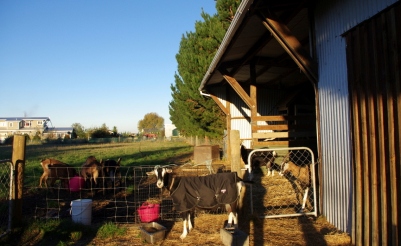 Gracie with her coat, in the pen by the barn.
Gracie with her coat, in the pen by the barn.
 Also, I am finally a competent milker after practice every day for a week! Unlike cows or sheep, goats can continue to produce milk for years after they kid, so it isn’t necessary to breed yearly to get milk. Just one of the many amazing things about these animals. With our daily milking, I also learned a new cream cheese recipe and an incredibly simple process for making goat’s milk soap.
Also, I am finally a competent milker after practice every day for a week! Unlike cows or sheep, goats can continue to produce milk for years after they kid, so it isn’t necessary to breed yearly to get milk. Just one of the many amazing things about these animals. With our daily milking, I also learned a new cream cheese recipe and an incredibly simple process for making goat’s milk soap.
 The herd is a mix of Nubians who don’t have the sort of warm fur best for winter, so Sarah’s started a breeding program with a hardier breed to get a mix that’s right for the southern climate. Nubians have floppy ears and a couple of the cross-bred ones now have funny ears that stick straight out! There are also a couple feral goat offspring – Snoopy’s a little wether that’s much smaller and stubbier than the others. There are some beautiful goats with horns, but because goats are quite mean to each other Sarah has started disbudding (de-horning) them while very young. In the long run it means less injuries to each other and the farmer. It’s no secret that the goats who currently have horns are at the top of the herd, since they have the ability to bash the others out of the way.
The herd is a mix of Nubians who don’t have the sort of warm fur best for winter, so Sarah’s started a breeding program with a hardier breed to get a mix that’s right for the southern climate. Nubians have floppy ears and a couple of the cross-bred ones now have funny ears that stick straight out! There are also a couple feral goat offspring – Snoopy’s a little wether that’s much smaller and stubbier than the others. There are some beautiful goats with horns, but because goats are quite mean to each other Sarah has started disbudding (de-horning) them while very young. In the long run it means less injuries to each other and the farmer. It’s no secret that the goats who currently have horns are at the top of the herd, since they have the ability to bash the others out of the way.
 Part of the herd, with Jilly at the front. Jilly got really sick that week with bottle-jaw, a symptom of something else. While Sarah prefers to use natural methods, antibiotics and other treatments are used when absolutely necessary to keep the goat healthy.
Part of the herd, with Jilly at the front. Jilly got really sick that week with bottle-jaw, a symptom of something else. While Sarah prefers to use natural methods, antibiotics and other treatments are used when absolutely necessary to keep the goat healthy.
Tikki, who, after jumping the fence, we tied at mealtimes so she wouldn’t steal food.
The only task I came to occasionally dread was feeding the bucks (JJ, Harry, and Arrow, the only gentleman of the bunch). They were in season while I was there so were a) more rambunctious than usual since they were craving sex and b) stinky as hell. Really, the bucks themselves were fine once I learned to deal with them as a goat would (push ’em around and show ’em who’s boss). But I have never smelled a more pungent and pervasive smell in my life. Inevitably I’d brush against one of them and my clothes would retain the odor and I’d smell it the rest of the day. One day they broke through the secondary safety gate and I had to struggle to get them back in with Jayden… THAT was a pain. I did find it funny that Jayden seemed to resent the bucks a lot more than I did though… perhaps he succumbed to a bit of male competition!

 All in all, I learned a ton about natural goatkeeping from Sarah and she was very generous with her wealth of knowledge about the animals. Though I tried to write some of it down I’m sure a lot of it has already escaped my brain. Guess I’m gonna have to seek out goats again!
All in all, I learned a ton about natural goatkeeping from Sarah and she was very generous with her wealth of knowledge about the animals. Though I tried to write some of it down I’m sure a lot of it has already escaped my brain. Guess I’m gonna have to seek out goats again!











